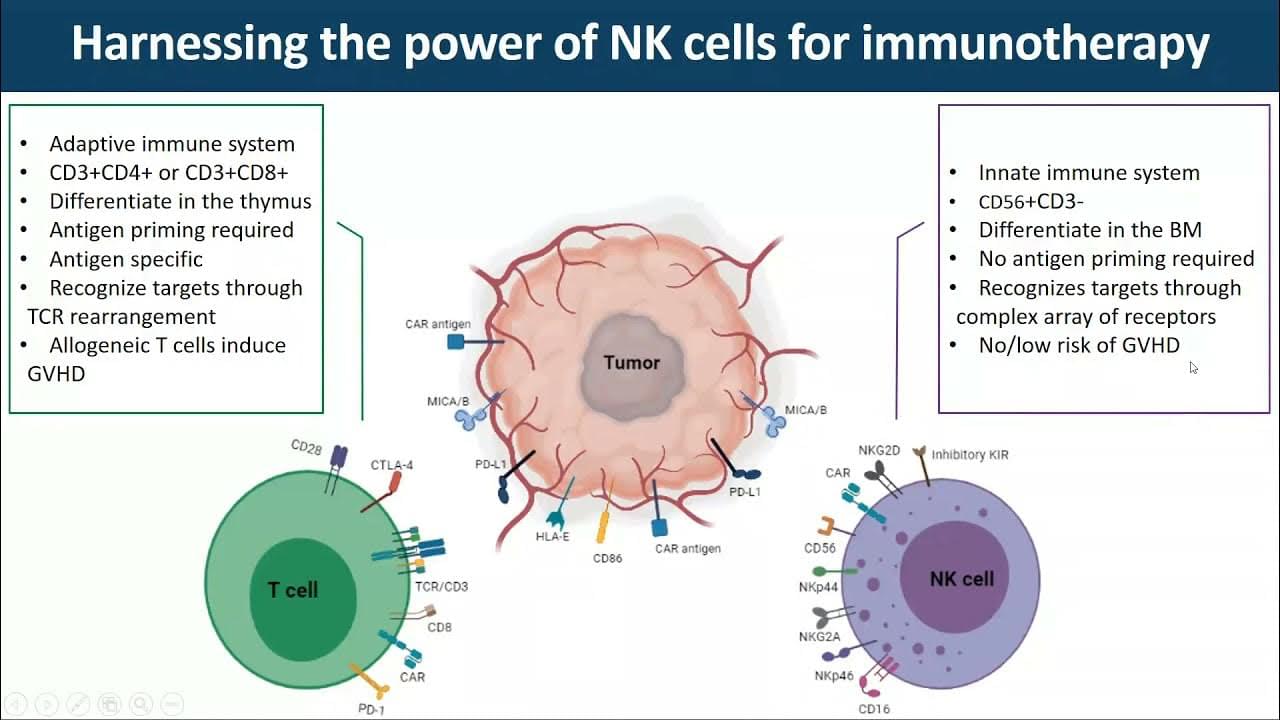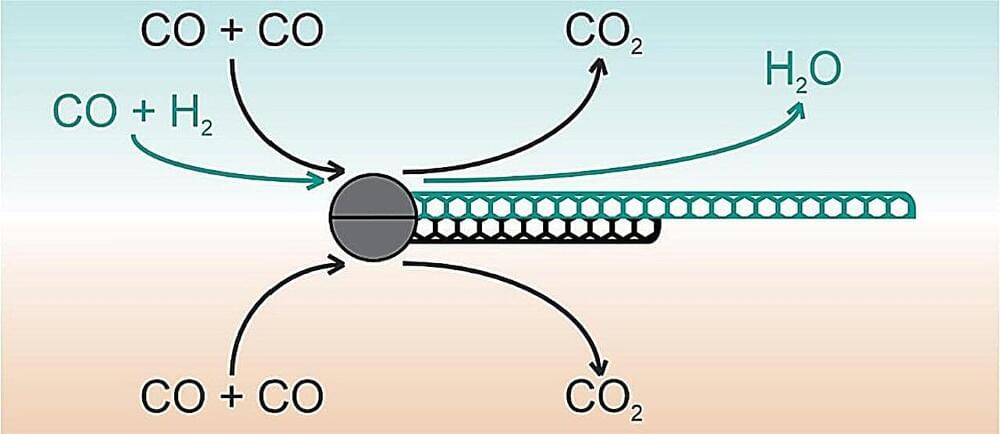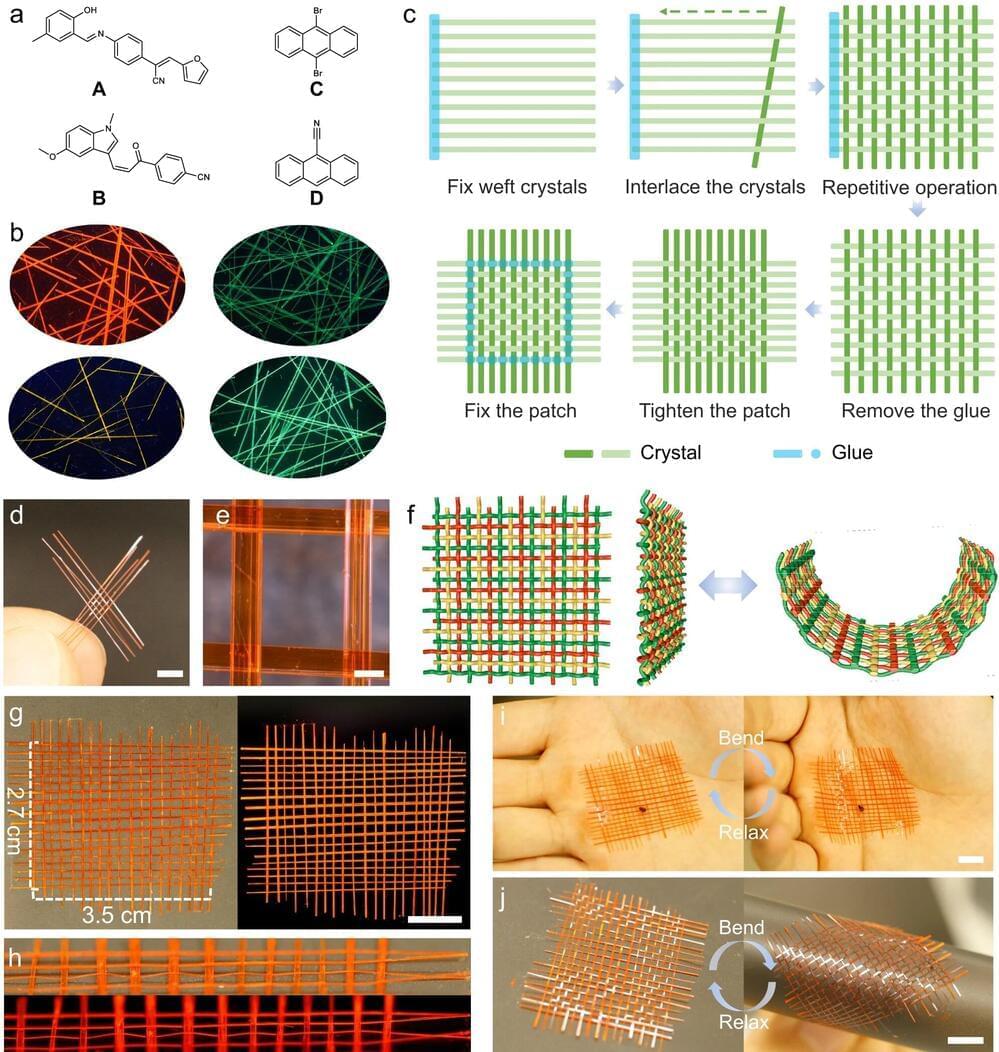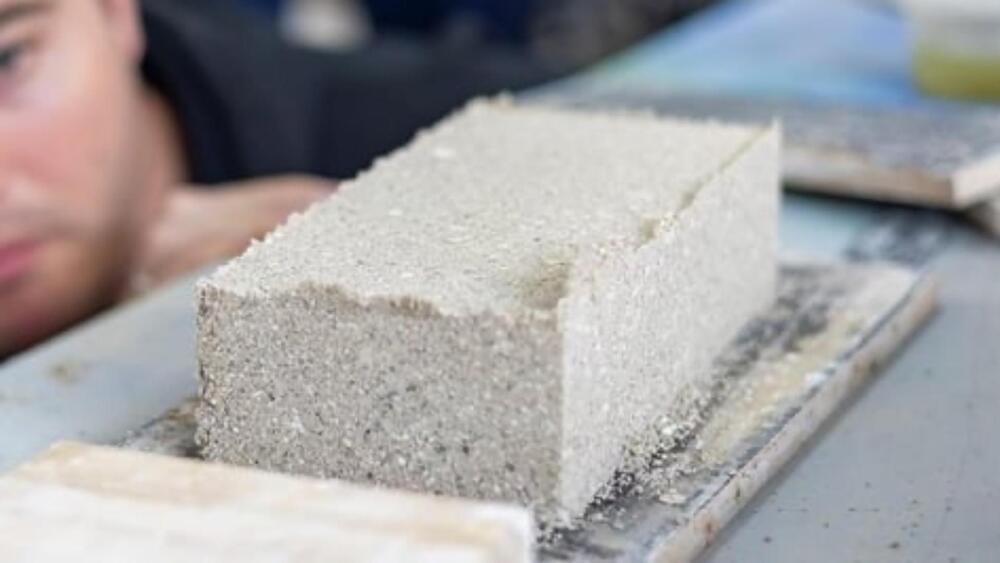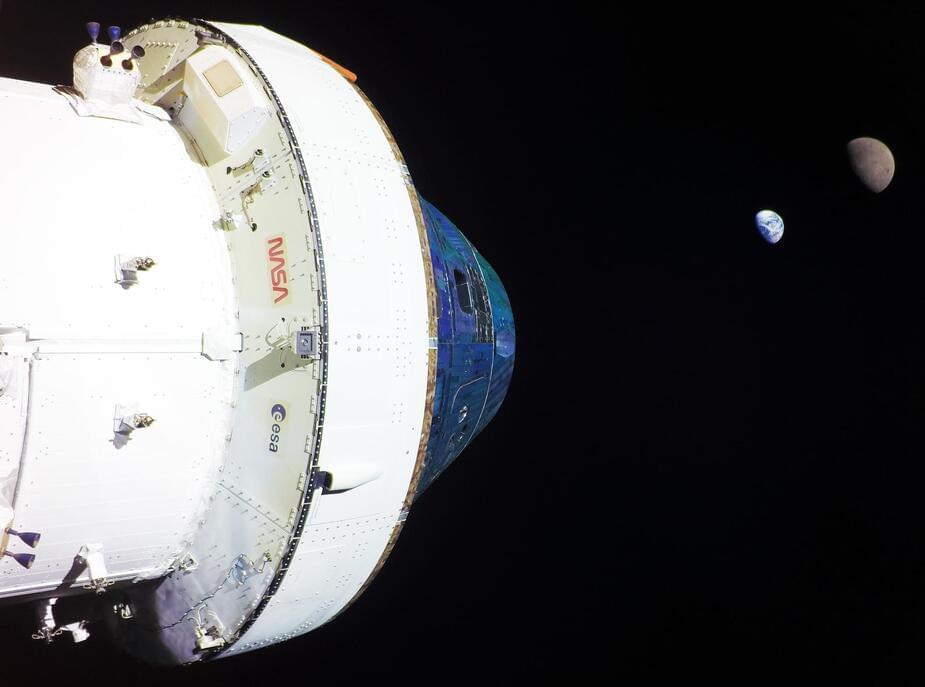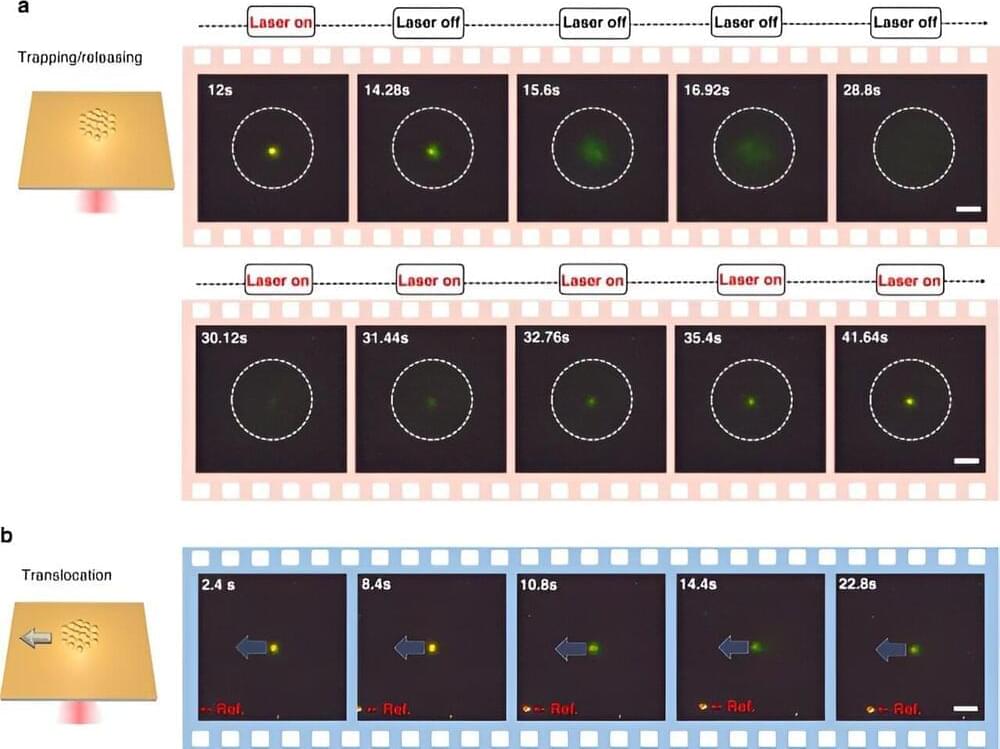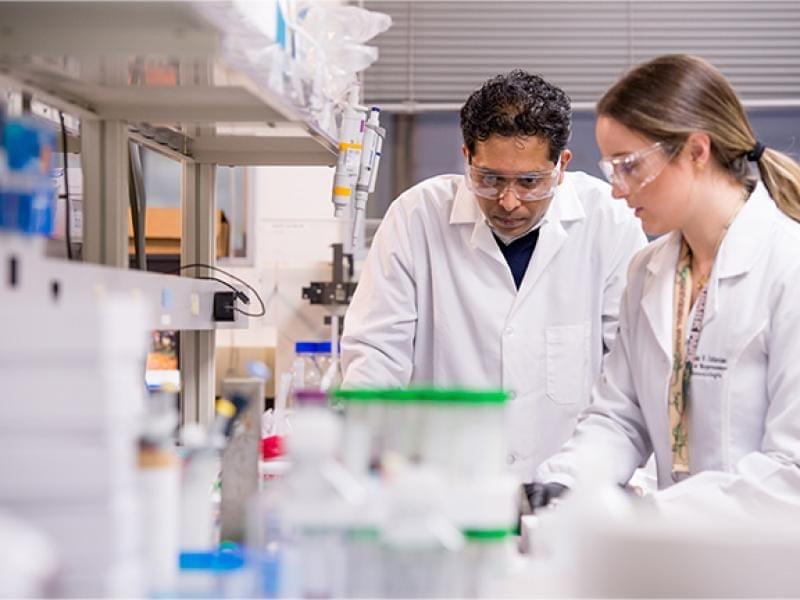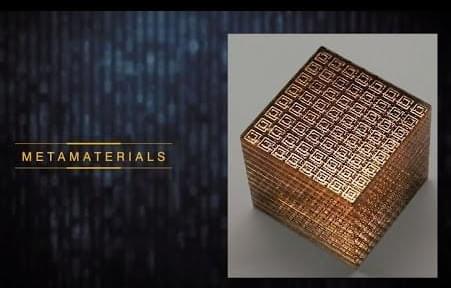Nov 30, 2023
Penetrating Solid Tumors with CAR Immune Cells
Posted by Shubham Ghosh Roy in categories: biotech/medical, engineering
Engineered immune cells have demonstrated great efficacy in lymphoma but not in solid tumors. On Oct 13th, 2021, two experts described recent advances in the development of CAR therapy for solid tumors.
Tamara Laskowski, PhD, Scientific Project Director of the CAR NK Program, Adoptive Cell Therapy Platform at the MD Anderson Cancer Center discussed “Engineering off-the-shelf CAR immune cells”.
Continue reading “Penetrating Solid Tumors with CAR Immune Cells” »
